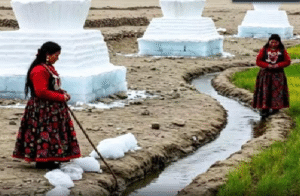R.N. Lakhanpal, a renowned paleobotanist from the Birbal Sahni Institute of Palaeosciences (BSIP), Lucknow, Uttar Pradesh, and his team made a significant discovery in 1984 when they found a well-preserved leaf fossil of the temperate palm Trachycarpus in Ladakh, located in the Himalayas. This discovery was groundbreaking because it provided the first definite megafossil evidence of the Miocene period (23 million to 5.3 million years ago) in the region.
- Climatic Implications:
The presence of Trachycarpus, a temperate palm, in Ladakh indicated that during the Miocene, the region had a much warmer and wetter climate than today.
It suggested that the Himalayas were not as high as they are now, allowing for subtropical and temperate flora to thrive.
- Tectonic and Geological Insights:
The finding supported the theory that India was still in the process of colliding with Eurasia, leading to continuous uplift and climatic changes in the Himalayas.
It provided evidence for paleoelevation reconstructions, helping scientists estimate the past altitude of Ladakh.
- Paleobotanical Importance:
The fossil was the oldest record of Trachycarpus in the region and one of the few megafossils from the Tertiary period found in the Himalayas.
It helped reconstruct past plant distributions, contributing to the study of paleoflora and vegetation shifts in response to climate change.
This discovery remains a crucial piece of evidence in understanding the paleoenvironment and geological history of the Himalayas, shedding light on the region’s transformation over millions of years.







